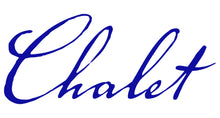Class Handout: Prepping the Spring Garden
Lawn Care
- Check for salt damage on turf & evergreens. Apply gypsum to soil to try and counteract harmful effect of sodium-based deicing products.
- Raking - Remove leaves and winter litter as needed.
- Seeding - Whether overseeding thin lawns or seeding bare areas create furrows to catch the seed. Don’t bury the seed and don’t cover with peat moss!
- Fertilizing - First application can go down as turf is coming out of dormancy. Examples: Lawn Restore (10-0-6), Espoma Lawn Fertilizer (18-0-3), Nature Safe (18-0-4), Espoma Organic Lawn Food (9-0-0), Milorganite (5-2-0). Consider including a crabgrass pre-emergent.
Bed prep for annual, vegetable beds
- Apply 1-2” of organic matter (Chalet leaf mulch, Chalet Organic Compost, Cotton Burr Compost, dehydrated manure, your own compost) over the surface of beds. Till or dig in to incorporate.
- Apply an organic fertilizer like Dr. Earth Tomato, Vegetable & Herb (5-7-3), Dr. Earth Bud & Bloom (4-10-7), Espoma Plant-Tone (5-3-3) or Holly-Tone (4-3-4).
- Frost hardy annuals include: pansies, violas, snapdragons, stocks, ranunculus, sweet peas, alyssum, nemesia, diascia, dianthus, bacopa, lobelia and osteospermum.
- Frost hardy veggies include: lettuce, cabbage, kale, spinach, onions, chard, broccoli, cauliflower, Brussel sprouts and root crops.
Perennials
- Finish cutting back anything you left up for winter interest. Do as early as possible to avoid damaging emerging perennials.
- Some evergreen perennials may need to be neatened up and winter-tattered leaves removed.
- Ex: Bergenia, Ferns, Hellebores, Heucheras.
- Don’t do anything to:
- Creeping phlox
- Oriental poppy
- Iberis as examples.
- Put hoops, rings, peony cages, and support structures that plants have to grow through in place now.
- Apply organic fertilizers like Dr. Earth Bud & Bloom Booster (4-10-7) or Espoma Flower-tone (3-4-5) per label directions.
- Apply 1-2” layer of growing season mulch. Ex: Chalet leaf mulch, cotton burr compost.
- Consider preventative applications of fungicides to disease-susceptible perennials as stems emerge from dormancy.
- Apply Sluggo to newly emerged hostas and ligularia when air temperatures reach 70° F. or higher to reduce slug damage.
- Apply pre-emergent control products before weed seedlings show up.
- Consider repellents (Plantskydd or Repels-All Spray and Spray with Hose ) if you’ve had deer or rabbit issues. High profile spring targets are newly emerging: hostas, roses and daylilies.
Roses
- As daytime temperatures stabilize in the 40s and the overwintering mulch thaws, start deconstructing the mound. Spread to use as summer mulch.
- Prune when reddish-pink buds start swelling enough to give you a sense of what’s alive and what isn’t. Look for the junction where dead (brown) tips become green stems.
- The harder you prune, the more stems you will get. Prune to an outward facing, swelling bud on green stems to direct growth.
- Dispose of any leaf debris from the previous year to reduce potential disease start-up.
- Make first fertilizer application (see Perennial fertilizer recommendations or Bayer All-in-One Rose & Flower Care-a fertilizer, insect and disease control) when you have fully opened leaves.
- If your rose bed is unmulched apply 1-2” Chalet leaf mulch, Cotton Burr Compost or shredded pine mulch.
Spring flowering bulbs
- Rake off any wind-blown debris.
- Apply fertilizer to the bed as foliage peeks out. Bulb-tone (3-5-3) is a good analysis for spring flowering bulbs.
- Consider repellents (Plantskydd or Repels-All Spray and Spray with Hose ) if you fear deer or rabbit issues- tulips and crocus can be targets.
Ground cover
- If you covered with evergreen boughs for winter remove now.
- Cut out/back any winter burn to English ivy. Thin, if necessary, to improve air circulation.
- Remove as much leaf accumulation as possible in all ground covers to reduce the likelihood of future disease problems.
- Check: Euonymus for scale and Pachysandra for stem blight. Respond accordingly.
Trees & Shrubs
- Remove tree wrap, protective trunk cylinders, burlap screens.
- Check for broken branches, dead plants. Any time there is dead wood it needs to be removed. Use proper pruning techniques!
- Maintenance pruning rule - If it blooms before July 1 it’s blooming on last summer’s growth and shouldn’t be pruned unless you’re willing to sacrifice flowers.
- If it blooms after July 1 it’s blooming on spring and early summer growth and can be pruned late winter or early spring with no loss of flowers.
- Know your plants, learn their susceptibilities. Ex: Older crabapples tend to be scab-prone (disease). It can be controlled with preventative fungicide applications as the leaves start emerging.
- Apply sulfur to acid-loving plants: azaleas, blueberries, hollies, rhododendrons and hydrangeas (if you want pink varieties to be blue) to acidify our alkaline soils. Must be applied directly to bare soil, not over mulch, to affect a change in pH.
- Fertilize as desired with Espoma Tree-tone (6-3-2) or Holly-tone (4-3-4).
- After winter debris has been cleared it’s time to beef up mulch. Apply a 2” layer of shredded hardwood or pine, chunk bark, leaf mulch or cotton burr compost. Leave a donut-sized opening around the trunks of trees or the stems of shrubs.
- Apply pre-emergent weed control to beds before weeds show up.

